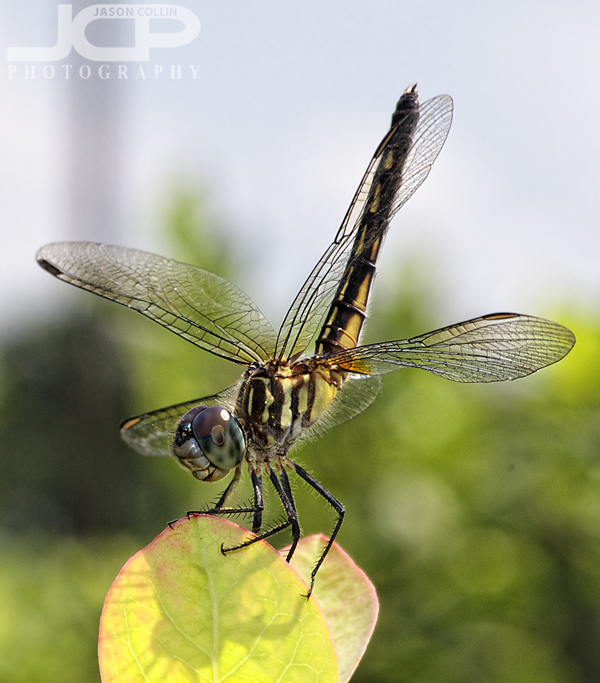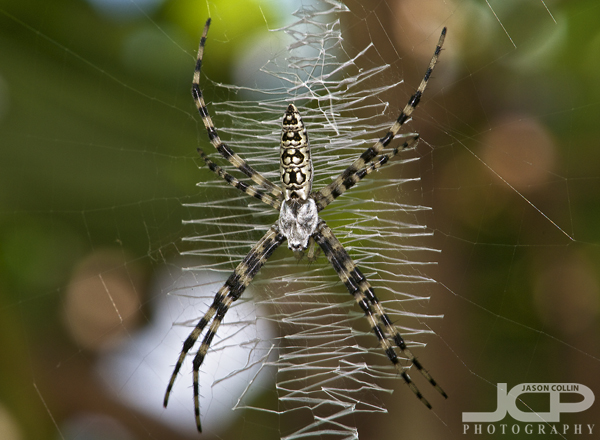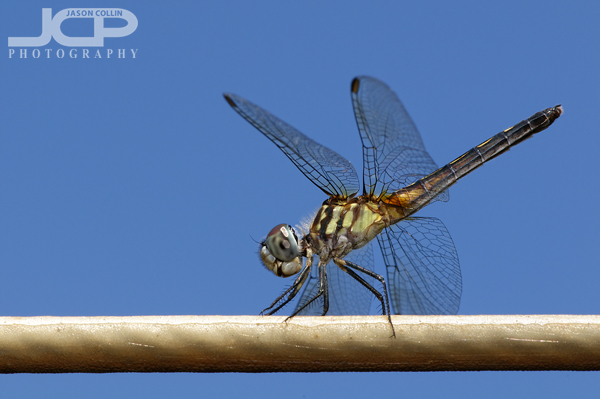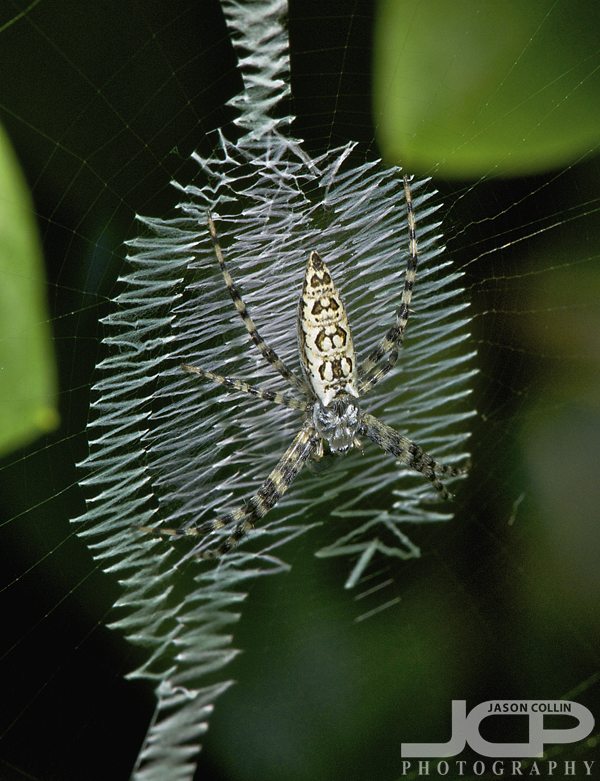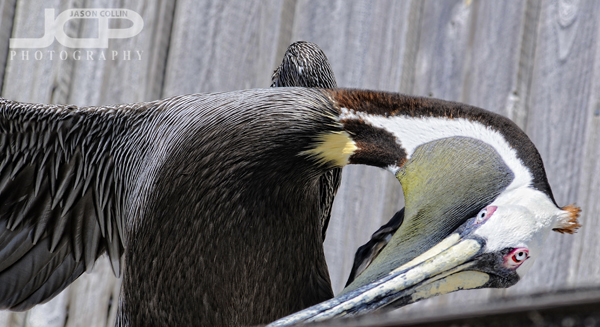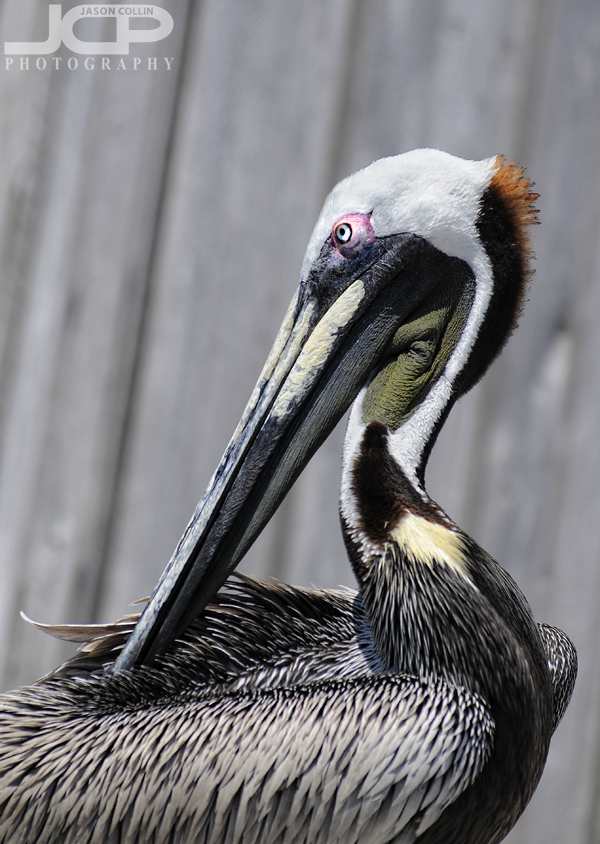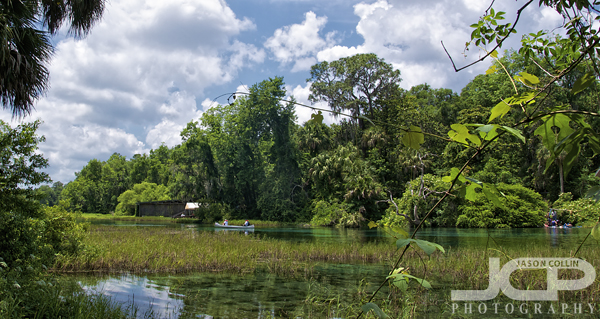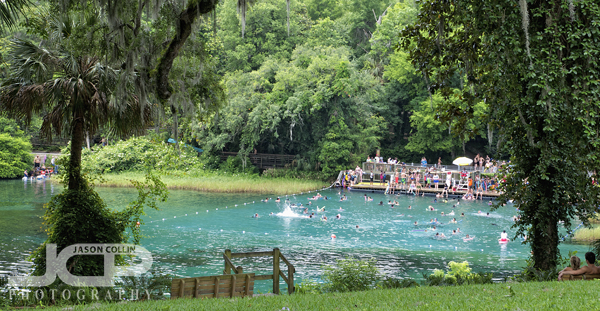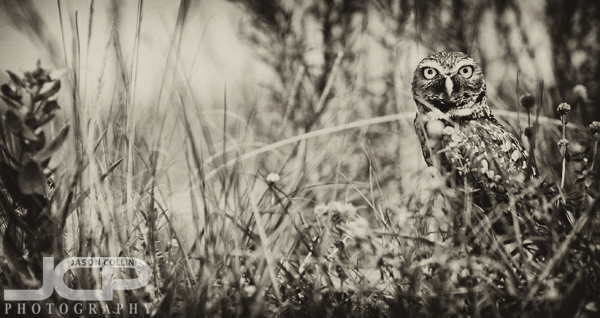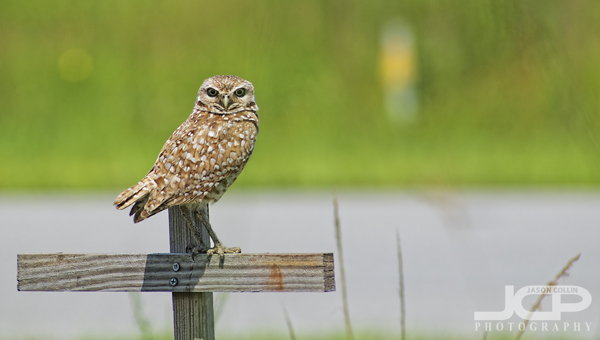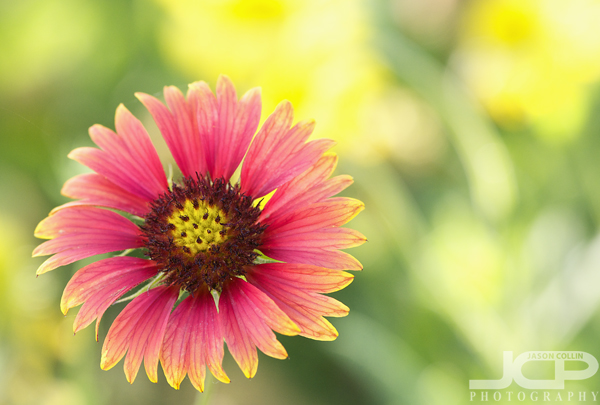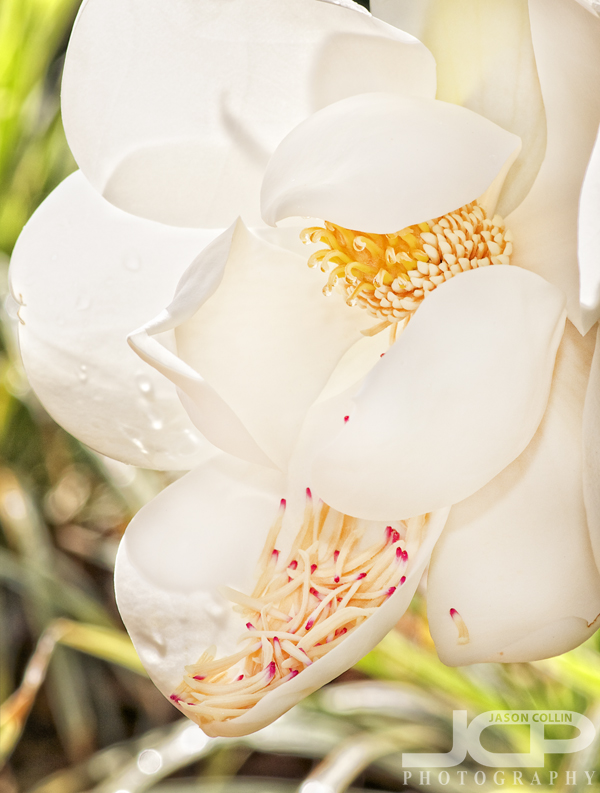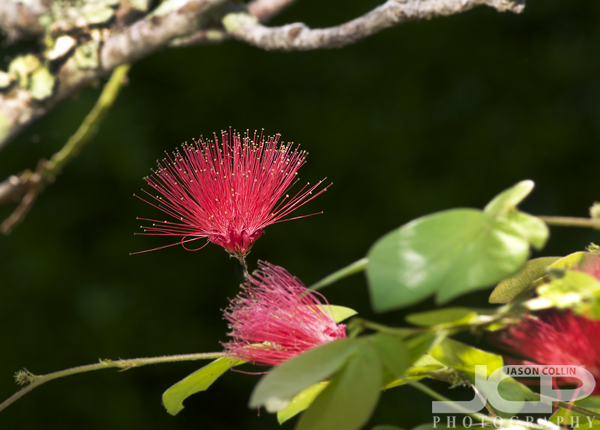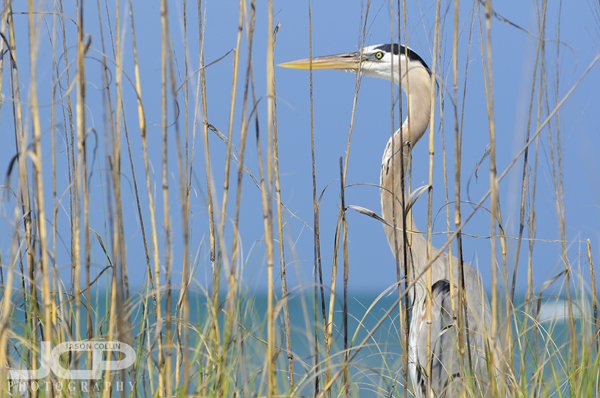 Great Blue Heron - Nikon D300 Nikkor 80-200mm f/2.8D @ f/5.6 ISO 200 1/1600 -0.67 ev
Great Blue Heron - Nikon D300 Nikkor 80-200mm f/2.8D @ f/5.6 ISO 200 1/1600 -0.67 ev
There are birds all over Florida. Great Blue Herons like the one above are often seen on beaches, and even on back patios! This series is meant to be a modest and/or amusing collection of random bird photographs. When I first looked at that great blue heron, I thought it looked like it was in prison. So since I could not get a clean shot of the bird, I chose to make use of the obstruction. I just made sure to use a single focus point and put it right on the GBR's eye.
 Seagull (with bokeh) - Nikkon D300 Nikkor 80-200mm f/2.8D @ f/8 ISO 200 1/800thThere is no more common bird than a seagull (assuming one lives by the sea). Why I chose this photograph was for its ultra creamy bokeh produced by the fantastic Nikkor AF ED 80-200mm f/2.8D lens, a great bargain alternative to the much more expensive Nikkor AF-S 70-200mm VR f/2.8G lens (not even to mention the crazy expensive VR II version). I first bought my 80-200mm lens (a used one) just under two years ago, and was amazed by its bokeh the first time I shot with it, and remain so to this very day.
Seagull (with bokeh) - Nikkon D300 Nikkor 80-200mm f/2.8D @ f/8 ISO 200 1/800thThere is no more common bird than a seagull (assuming one lives by the sea). Why I chose this photograph was for its ultra creamy bokeh produced by the fantastic Nikkor AF ED 80-200mm f/2.8D lens, a great bargain alternative to the much more expensive Nikkor AF-S 70-200mm VR f/2.8G lens (not even to mention the crazy expensive VR II version). I first bought my 80-200mm lens (a used one) just under two years ago, and was amazed by its bokeh the first time I shot with it, and remain so to this very day.
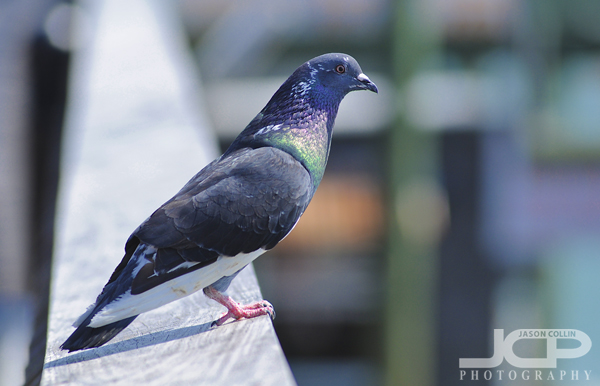 (rainbow?) pigeon - Nikon D300 Nikkor 80-200mm f/2.8D @ f/4 ISO 200 1/1250thMaybe the pigeon is more common than the seagull in Florida? Still, I chose to include this photo because of the repeat of color on the pigeon's neck matching the color of the bokeh. With bird photography, bokeh can really enhance a shot from just being a snapshot of a common bird to a photograph of a common scene shown in a way that cannot be seen by just standing there. The quality of bokeh actually varies greatly between lenses. Before the 80-200mm lens, I had the Nikkor AF-S 18-200mm f/3.5-5.6G lens. At first I thought the latter's bokeh was good. However, upon first seeing the bokeh produced by the 80-200mm, I was stunned at how much creamier it was. Selling the 18-200mm lens was the first thing I did out of learned photographic knowledge.
(rainbow?) pigeon - Nikon D300 Nikkor 80-200mm f/2.8D @ f/4 ISO 200 1/1250thMaybe the pigeon is more common than the seagull in Florida? Still, I chose to include this photo because of the repeat of color on the pigeon's neck matching the color of the bokeh. With bird photography, bokeh can really enhance a shot from just being a snapshot of a common bird to a photograph of a common scene shown in a way that cannot be seen by just standing there. The quality of bokeh actually varies greatly between lenses. Before the 80-200mm lens, I had the Nikkor AF-S 18-200mm f/3.5-5.6G lens. At first I thought the latter's bokeh was good. However, upon first seeing the bokeh produced by the 80-200mm, I was stunned at how much creamier it was. Selling the 18-200mm lens was the first thing I did out of learned photographic knowledge.
 diving brown pelican - Nikon D300 Nikkor AF-S 105mm VR micro f/2.8G lens ISO 400 f/4 1/5000thThis female brown pelican was a millimeter away from breaking the water's surface in search of her dinner. I made sure to use a very fast shutter speed in order to be able to freeze her plunging dive. Thankfully, she made dive after dive so had several chances to capture her. However, like all of these shots, I was not out to purposefully photograph birds at the time. Three of the shots I made while teaching a DSLR photography lesson and the other was made during a portrait session. Nowadays I do not have much chance to to photograph Florida's many birds, hence the start of this collection series!
diving brown pelican - Nikon D300 Nikkor AF-S 105mm VR micro f/2.8G lens ISO 400 f/4 1/5000thThis female brown pelican was a millimeter away from breaking the water's surface in search of her dinner. I made sure to use a very fast shutter speed in order to be able to freeze her plunging dive. Thankfully, she made dive after dive so had several chances to capture her. However, like all of these shots, I was not out to purposefully photograph birds at the time. Three of the shots I made while teaching a DSLR photography lesson and the other was made during a portrait session. Nowadays I do not have much chance to to photograph Florida's many birds, hence the start of this collection series!

